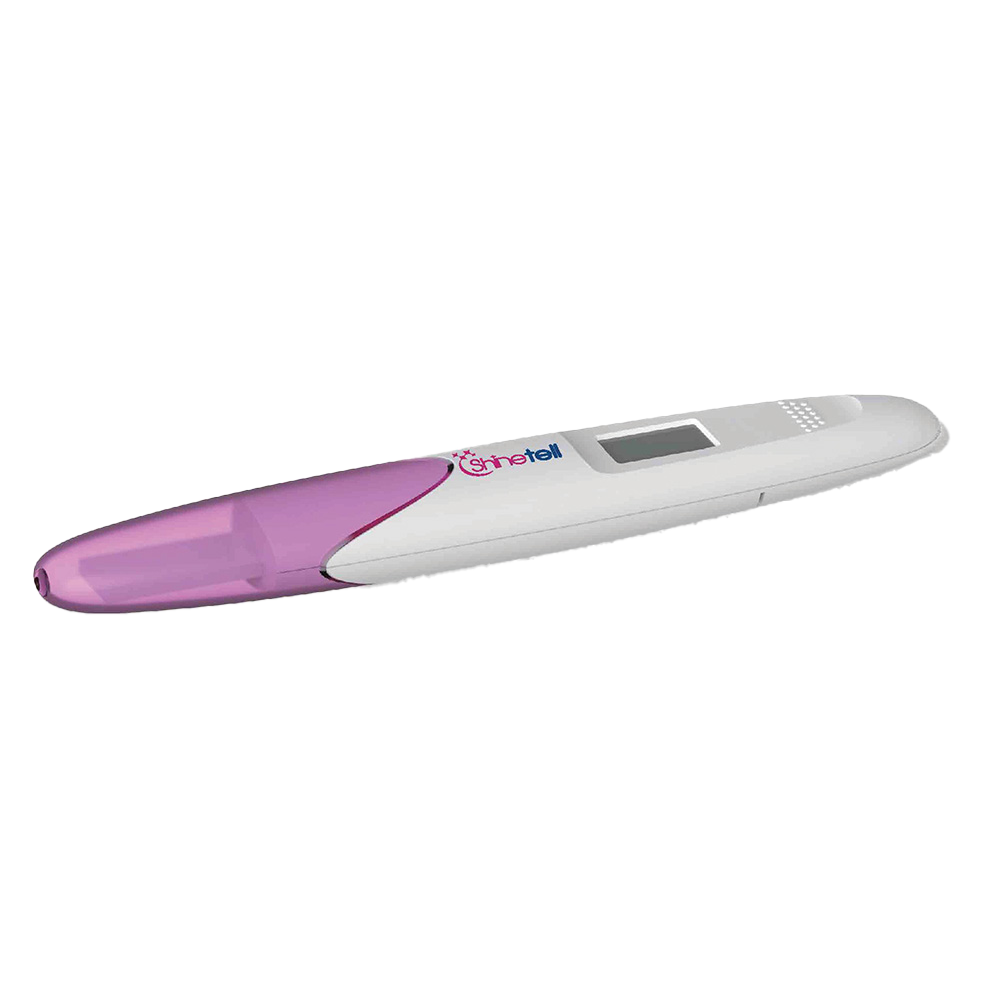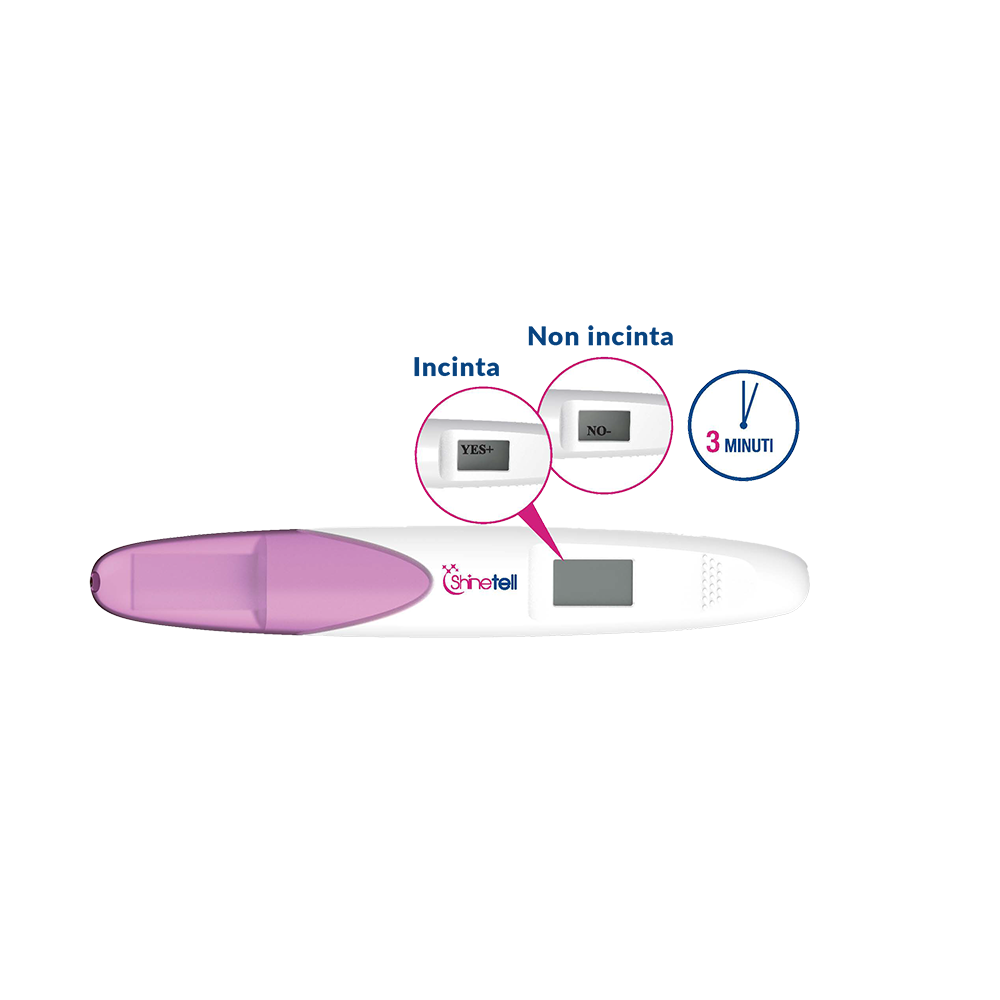Digital hCG Pregnancy Test
The digital hCG pregnancy test is a fast and easy-to-use pregnancy test. It is used for the qualitative detection of hCG in human urine. For in vitro self-diagnostic use only.
PRINCIPLE
During the test, the sample reacts with the particle coated with specific antibodies. The mixture migrates upward on the membrane chromatographically through capillary action to react with specific capture antibodies on the membrane, generating a colored line on the test strip. The resulting signal is converted into an electrical signal by the photodiode and then processed by the software to be displayed on the LCD screen.
INSTRUCTIONS for the digital hCG pregnancy test:
Important:
During use, never hold the test with the absorbent tip facing upwards.
- When ready, remove the test from the aluminum pouch and take off the cap. Hold the non-slip grip in a way that the absorbent tip is pointing downwards.
- Keep the absorbent tip pointing downward, reattach the cap, and place the test on a flat surface with the screen facing upward. The clock symbol will appear and flash on the screen after applying urine, indicating that the test is in progress.
- After approximately 3 minutes, the result ‘YES+’ or ‘NO-‘ will appear on the screen.
READING THE RESULTS
- YES+: displayed on the screen, indicating a possible pregnancy.
- NO-: displayed on the screen, indicating a likely absence of pregnancy.
LIMITATIONS of the digital hCG pregnancy test:
There is a possibility that this test may yield inaccurate results. Consult your healthcare provider before making any medical decisions.
- Medications containing hCG (such as Pregnyl, Profasi, APL, etc.) may lead to a false-positive result. Alcohol and pain relievers that do not contain hCG do not affect the test result.
- Highly diluted urine samples, as indicated by a low specific gravity, may not contain representative levels of hCG. If pregnancy is still suspected, collect a first-morning urine sample 48 hours later and perform the test again.
- This test may produce false-positive results. A variety of conditions other than pregnancy, including trophoblastic disease and some non-trophoblastic neoplasms such as testicular tumors, prostate cancer, breast cancer, and lung cancer, can cause elevated levels of hCG. Therefore, the presence of hCG in urine alone should not be used to diagnose pregnancy unless these conditions have been ruled out.
- This test may yield false-negative results. False-negative results can occur when hCG levels are below the sensitivity threshold of the test. If pregnancy is still suspected, collect a first-morning urine sample 48 hours later and perform the test again. In case of suspected pregnancy and persistent negative test results, consult a doctor for further diagnosis.
- This test provides a presumptive diagnosis for pregnancy. A confirmed diagnosis of pregnancy must be made by a physician only after evaluating all clinical and laboratory results.
- Unusual-colored urine (e.g., red or brown) may cause inaccurate results.



